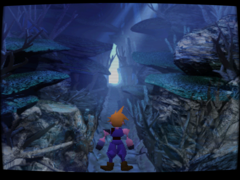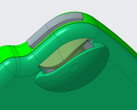Final Fantasy developer and veteran programmer at Square Enix, Koji Sugimoto, expressed bewilderment over the growing fan admiration for the PS1’s retro low-poly graphics.
Sugimoto posted on his X account on August 5, 2025, and reacted to a Unity Japan demonstration of a new Shader graph tool dubbed “No Perspective.” This shader graph allows developers to easily replicate the retro appeal of PS1 games. Sugimoto commented:
“Back then, we spent so much futile effort trying to avoid distortion, and nowadays people call it ‘charming’.”
This isn’t the first time Sugimoto has shared his views on PS1’s texture warping. In a 2019 post, he called it “detestable”. Sugimoto further added, “I just don’t get what’s so interesting about trying to replicate that.”
Sugimoto is no stranger to the PS1’s wobbly textures and distortion effects. He began his career in the video game industry, working on visual effects programming on the 1995 SNES version of Chrono Trigger. During the PS1 era, he worked on a Chrono Trigger port, Xenogears, and Threads of Fate, locally known as Dewprism in Japan.
The developer worked his way up to titles like Final Fantasy X, Final Fantasy X-2, Crisis Core: Final Fantasy VII for the PSP, and The 3rd Birthday. Koji Sugimoto navigated through hardware limitations, trying to bypass graphical quirks that irked him and viewed them less fondly compared to modern fans.
Texture mapping was a serious problem back in the day, as the PS1 relied on affine texture mapping, only applying images to polygons on the X and Y coordinates while ignoring depth. The PS1 lacked a depth buffer, also known as the Z-buffer. It is a type of memory that helps a console determine which surfaces should be visible and what should be hidden behind others.
Due to the absence of a depth buffer, developers had to manually instruct the console on the order of each polygon draw. This was the main reason behind the “wobbly” artifacts on in-game surfaces when viewed at certain angles.
While pixels jittered due to the hardware's inability to precisely allocate them, this created a unique look that many gamers find nostalgic these days. While indie developers lean into the idea of deliberate texture wobbling in their titles, Sugimoto’s stance does bear weight, reminding us of the PS1 era’s hardware limitations and how much developers had to work to get around them at times.
Buy the Sony PlayStation Classic on Amazon






















